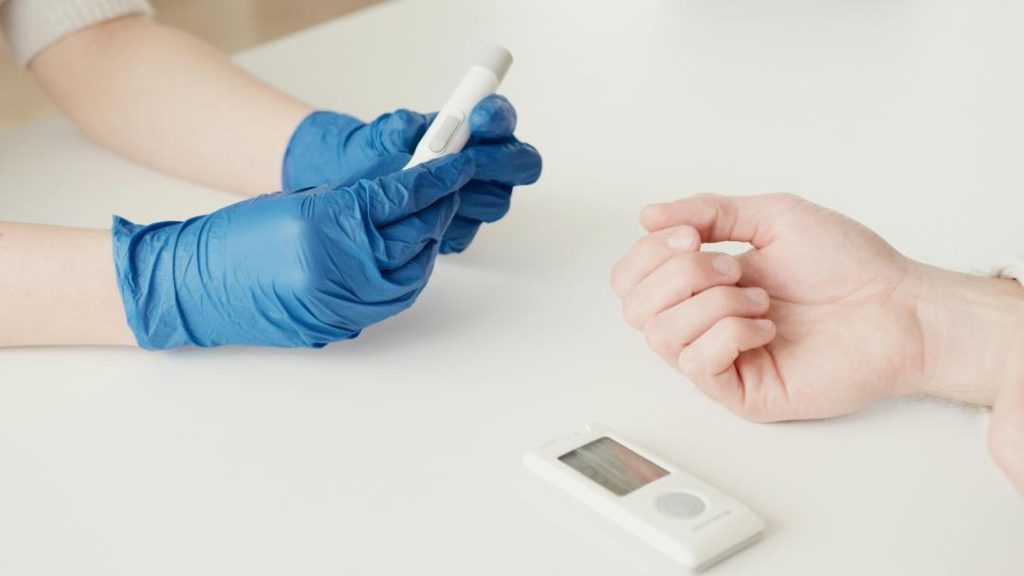
Is Diabetes in Young People More Dangerous?
Type 2 diabetes is often thought of as a disease that affects older adults, but the reality is that it can strike at any age. In fact, according to the American Diabetes Association, the prevalence of type 2 diabetes among people under the age of 40 has increased by 45% over the past decade. This rise in early-onset type 2 diabetes has raised concerns about the potential long-term consequences of the condition, particularly among younger patients.
Research suggests that developing type 2 diabetes before age 40 may lead to faster and more severe complications compared to developing it later in life. This is because younger patients have a longer period of time to develop these complications, which can have a significant impact on their overall health and quality of life.
Faster and More Severe Complications
Studies have shown that people who develop type 2 diabetes in their 20s and 30s are more likely to experience faster and more severe complications, including:
- Heart Disease: Younger patients with type 2 diabetes are at a higher risk of developing heart disease, which is the leading cause of mortality among people with diabetes. This is because high blood sugar levels can damage the blood vessels, leading to cardiovascular disease.
- Kidney Damage: The kidneys play a crucial role in filtering waste products from the blood. High blood sugar levels can damage the kidneys, leading to kidney failure and the need for dialysis.
- Early Death: Developing type 2 diabetes at a young age can increase the risk of early death. A study published in the Journal of the American Medical Association found that people who developed type 2 diabetes before age 40 were more likely to die prematurely compared to those who developed it later in life.
Long-term Risks
Younger patients with type 2 diabetes are also at a higher risk of developing long-term complications, including:
- Vision Loss: High blood sugar levels can damage the blood vessels in the eyes, leading to vision loss and blindness.
- Nerve Damage: High blood sugar levels can damage the nerves, leading to numbness, tingling, and pain in the hands and feet.
- Kidney Disease: As mentioned earlier, high blood sugar levels can damage the kidneys, leading to kidney disease and the need for dialysis.
Importance of Early Diagnosis and Treatment
Early diagnosis and treatment are critical for protecting the health of younger patients with type 2 diabetes. This is because early treatment can help to:
- Prevent Complications: Early treatment can help to prevent complications from developing, reducing the risk of long-term damage to the kidneys, eyes, and nerves.
- Improve Glycemic Control: Tight control of blood sugar levels is essential for preventing complications. Early treatment can help to improve glycemic control, reducing the risk of complications.
- Reduce Mortality: Early treatment can help to reduce mortality rates among people with type 2 diabetes, particularly among younger patients.
Lifestyle Changes
In addition to medication and other treatments, lifestyle changes are also critical for managing type 2 diabetes. This includes:
- Diet: Eating a healthy, balanced diet that is low in sugar and saturated fats can help to manage blood sugar levels.
- Exercise: Regular exercise, such as walking or jogging, can help to improve insulin sensitivity and reduce blood sugar levels.
- Maintaining a Healthy Weight: Maintaining a healthy weight through a combination of diet and exercise can help to reduce the risk of complications.
Conclusion
In conclusion, developing type 2 diabetes before age 40 can lead to faster and more severe complications, including heart disease, kidney damage, and early death. Younger patients with type 2 diabetes are at a higher risk of developing long-term complications, making early diagnosis and treatment critical for protecting their health.
By understanding the risks associated with early-onset type 2 diabetes, patients can take steps to manage their condition and reduce the risk of complications. This includes making lifestyle changes, such as diet and exercise, and working closely with healthcare providers to develop a treatment plan that is tailored to their individual needs.
Read more about early-onset type 2 diabetes at: https://thepfc.club/blogs/news/what-you-should-know-about-early-onset-type-2-diabetes-1






